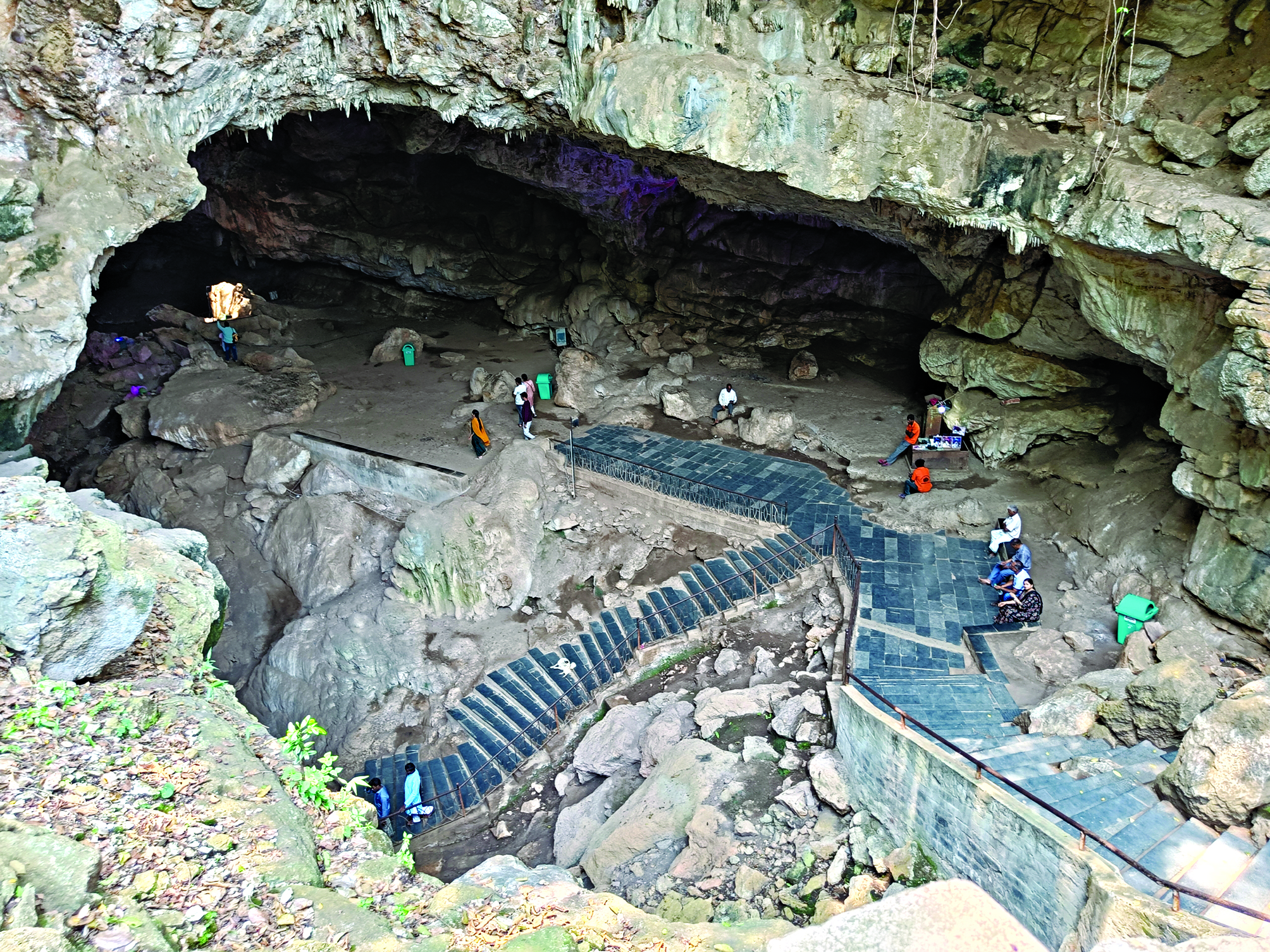Marvel of nature
The Bora Caves, formed by the natural force of humic acid-laden water of Gosthani River, are one-million-year-old marvelous limestone structures, as also the deepest caves in the country

After seeing the beautiful beaches and temples of Visakhapatnam, if you are looking forward to some adventure worth ticking off the bucket list, Bora Caves in the Araku Valley of Visakhapatnam can offer you this experience.
At a distance of 88 km from Vizag, Bora Caves are one-million-year-old limestone caves and the deepest caves in the country. These range across two sq. kms, and you can walk around for 0.35 kms inside the cave. One has to take about a 440-step walk to enjoy these natural rock formations.
The name ‘Borra’ came from Desia Odia (Southwestern Odia language) word ‘Bora’, which means ‘a hole’, as the district (Vizag) shares its long borderline with Odisha. The native name for the caves is Borra Guhalu, wherein ‘Borra’ means something that has been bored into the ground and ‘Guhalu’ means caves in Telugu language.
The caves, which are predominantly limestone structures, have, at the deepest, extended to a depth of 80 meters. The main entrance to the cave is at an altitude of 705 m above sea level while the lowest point lies at 625 m. This cave has a wide opening at the entrance, and steps are constructed for easy access to the inside, or core area of the cave.
They were carved out by small streams from hillocks going towards the Gosthani River. Humic acid in the water reacted with the calcium carbonate in limestone of the hills, which gradually broke down the rocks, creating the caves. The caves were, thus, created over a very long period of time. The dissolved limestone trickled down drop by drop, forming different shapes in the cave. Over the years, such formations have grown and taken different shapes.
Before entering into the cave, one can also see Gosthani River in the valley, which is treated as Holy River by the local tribals.
These natural caves were discovered in 1807 by William King George of the Geological Survey of India when he was on one of his expeditions. Locals, however, have an interesting story in this regard. According to them, once a cowherd lost his cow while they were grazing. He soon realised that his cow had fallen down. While searching for the cow, the cowherd found these caves and came across a Linga inside it. The belief is that the Linga (Lord Shiva) saved the cow. After this, a small Shiva temple was built right outside this cave. The caves also house a natural shrine of Lord Shiva. It also attracts devotees to see this natural miracle.
Bora Caves are one of the only existing structures of the middle Palaeolithic culture. Archaeologists of Andhra University, during their studies and research, unearthed stone tools that are deemed to have been in use back to 30,000-50,000 years. Finding some old tools in the Bora cave makes it one of the only existing structures of the middle Palaeolithic culture.
The caves remain cool throughout the year, even at the peak of the summer. The caves are so deep that only limited light penetrates inside. APTDC has installed colourful lighting at various places inside the caves, which gives a really good ambience, combined with the naturally formed, unique shaped rocks. Plants are found at the entrance or openings of the caves only, as insufficient light inside the caves prevent photosynthesis.
Reaching Bora Caves from Vizag is an experience in itself. The train journey over a distance of 100 km from the Visakhapatnam railway station passes through the Eastern Ghats which has thirty tunnels along the route. The journey takes about three hours to reach Borra Guhalu station.
Indian Railways has introduced Vistadome coach in the train route to reach Bora Caves. Vistadome coach is specially designed, with a single large size look-out window at the observation lounge from
where tourists can get a panoramic view. The see-through glass coach offers an exhilarating experience for tourists as it passes through the tunnels.
Important facts
* Reaching there: Train or road. Road journey also takes around three hours from Vizag;
* Entrance fee: Rs 80 (adults), Rs 60 (children), Rs 100 (with camera), Rs100 (for video);
* Timings: 10 am to 5 pm (lunch break 1-2 pm);
* Best time to visit: Between Novembers and March;
* Clothes to wear: Comfortable clothes with walking shoes to move up and down the stairs;
* PS: There is no loo or drinking water facility inside the cave. There are also instructions to use the washroom before entering into caves.
The writer is a senior executive in a CPSE. Views expressed are personal



